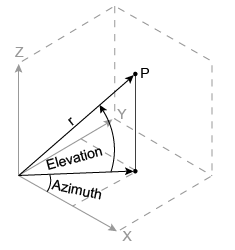cart2sph
将笛卡尔坐标转换为球面坐标
说明
示例
输入参数
输出参量
算法
从三维笛卡尔坐标到球面坐标的映射为
azimuth = atan2(y,x) elevation = atan2(z,sqrt(x.^2 + y.^2)) r = sqrt(x.^2 + y.^2 + z.^2)

球面坐标表示法不是标准表示法。对于 cart2sph 函数而言,elevation 是从 x-y 平面进行测量的。请注意,如果 elevation = 0,则该点位于 x-y 平面中。如果 elevation = pi/2,则该点位于正 z 轴上。
扩展功能
版本历史记录
在 R2006a 之前推出